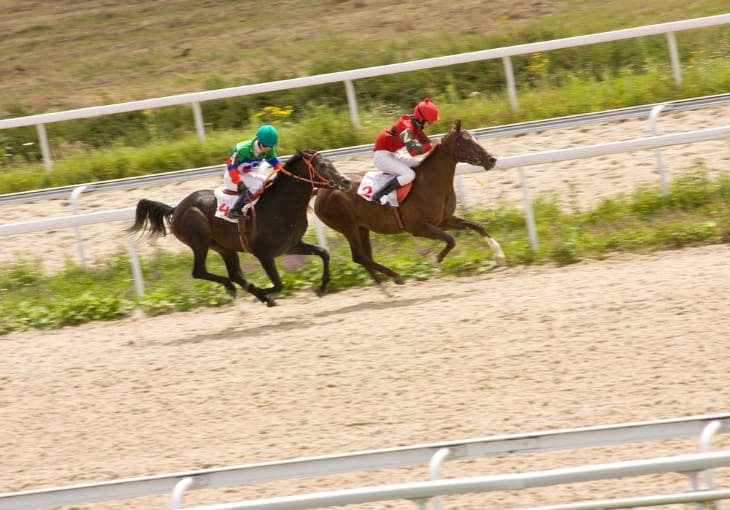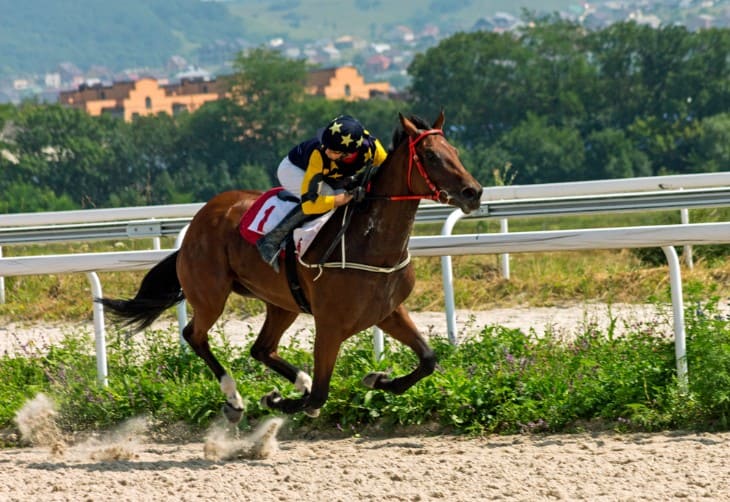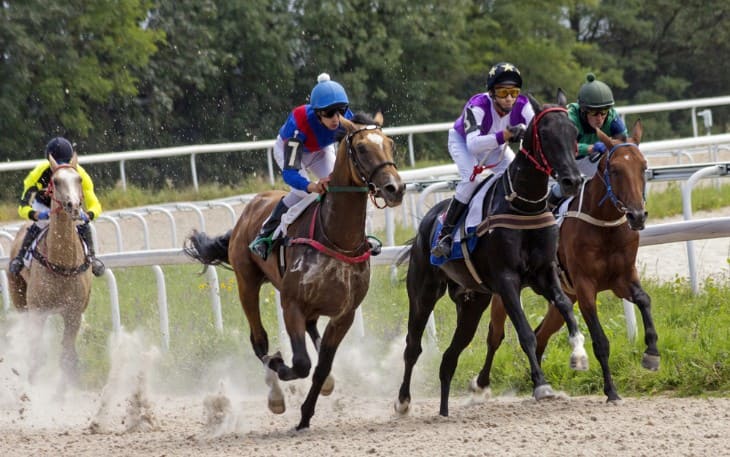Equine physiology and fitness are crucial in understanding a horse's racing potential and recovery abilities. The physical attributes and health of a racehorse directly influence its performance on the track. Key aspects of equine physiology include:
- Muscular System: The power behind a horse's speed lies in its muscular system. Fast-twitch muscle fibres are abundant in racehorses, enabling quick and powerful movements essential for racing.
- Respiratory System: A horse's respiratory system is highly efficient, allowing for maximum oxygen intake during races. This system's capacity often determines the stamina and endurance of the horse.
- Cardiovascular System: The heart and blood vessels play a vital role in pumping blood and supplying oxygen to muscles. Larger heart size is often associated with greater racing ability.
In terms of fitness, a racehorse undergoes rigorous training regimes to enhance its physical capabilities. Training focuses on building stamina, muscle strength, and agility. This preparation includes:
- Exercise Regimens: These vary from light workouts to intense training sessions, tailored to the horse's racing schedule and physical condition.
- Nutrition and Diet: A balanced diet is essential for maintaining a horse's health and energy levels. High-quality feed and supplements are carefully chosen to meet the nutritional needs of racing horses.
- Rest and Recovery: Adequate rest periods are crucial for muscle recovery and overall health. Trainers monitor rest cycles to ensure horses are fit and ready for races.
Training Methods for Optimal Horse Performance
Training racehorses is an intricate process that balances physical conditioning with mental preparedness. The primary goal of training is to maximise a horse's speed, stamina, and agility, ensuring they are competitive on race day. Trainers employ a variety of methods to achieve this, including track work, where horses are conditioned to gallop at different speeds and distances. This helps in developing their cardiovascular and muscular strength. Another key aspect is interval training, which alternates between high-intensity workouts and low-intensity exercises, aiding in building endurance and reducing the risk of injuries.
Mental training is equally important. Racehorses must be accustomed to the racing environment, which includes handling the noise and crowd of a race day. This aspect of training involves exposing horses to racecourse-like conditions, helping them remain calm and focused during actual races. Trainers also work on starting gate training, where horses are taught to launch effectively from the gates, a critical skill in races.

Coping with Stress and Recovery
The psychological well-being of racehorses is a critical factor that significantly impacts their performance and Betting on Recovery. Horses, like humans, can experience stress and anxiety, which can adversely affect their racing ability and recovery processes. Stress can stem from various sources such as transportation, unfamiliar environments, or the intense atmosphere of racing events. Understanding and managing this stress is key to ensuring that horses are mentally fit for races.
Recovery from stress involves both physical and psychological aspects. Physically, horses need time to recuperate from the exertion of racing. This involves proper rest, nutrition, and sometimes medical care if injuries are sustained. Psychologically, horses benefit from a stable and calm environment post-race. Trainers and handlers play a significant role in providing this, often using techniques like gentle grooming, quiet time, and familiar routines to help horses unwind and recover. Ensuring that horses have a healthy recovery period is essential for their long-term well-being and sustained performance in races.
Betting Strategies: Analysing Past Performance
Betting on horse races involves analysing a plethora of factors, with past performance being a primary consideration. Punters study a horse's previous races to gauge its form, speed, and consistency. This analysis includes examining race records, track conditions, and competition faced in earlier races. Additionally, understanding the impact of variables like jockey experience and training history can provide insights into a horse's potential performance. Historical data often reveals patterns or preferences in a horse's performance, such as favoured track types or distances, crucial in making informed betting decisions.
Another aspect of betting strategy is assessing the odds. Odds reflect a horse's perceived chance of winning, influenced by factors like past performance, public opinion, and expert analysis. Bettors often compare odds offered by different bookmakers, seeking value bets where the potential return outweighs the risk. Successful betting requires a balance between statistical analysis and intuitive judgment, making it both an art and a science.
Injury and Recovery in Racehorses
Injuries are an inevitable part of horse racing, and understanding their management is vital for those Betting on Recovery. The types of injuries racehorses sustain can range from minor strains to more serious conditions that may require extended recovery time. Common injuries include:
- Musculoskeletal Injuries: These involve bones, muscles, tendons, and ligaments. Examples include fractures, tendonitis, and sprains.
- Respiratory Issues: Conditions like bleeding in the lungs (exercise-induced pulmonary haemorrhage) can occur due to intense physical exertion.
- Hoof Problems: Issues such as cracks or abscesses in the hooves can be debilitating for racehorses.
Effective recovery from these injuries is crucial for a racehorse's return to the track. Recovery strategies typically involve:
- Veterinary Care: Immediate and ongoing medical attention is crucial, often involving medications, surgery, or physical therapy.
- Rest and Rehabilitation: Adequate rest is essential for healing, followed by a carefully monitored rehabilitation process to gradually reintroduce exercise.
- Diet and Nutrition: A specialised diet can aid in recovery, providing the necessary nutrients for healing and strength rebuilding.
The management of injuries and the subsequent recovery process significantly impact a horse's racing future, making it a key consideration in the racing industry.
In recent years, the integration of technology in monitoring horse health has revolutionised the horse racing industry. Advanced tools and devices are now used to track and analyse various health parameters of racehorses, aiding in early detection of potential health issues and enhancing their overall care. Wearable technology, such as GPS trackers and heart rate monitors, provides real-time data on a horse's physical condition during training and races. This information is invaluable in designing effective training programmes and ensuring the well-being of the horse.

Famous Comeback Stories in Horse Racing History
The horse racing world is replete with inspiring stories of remarkable comebacks, where horses have overcome significant challenges to triumph on the racetrack. These stories not only capture the resilience and determination of these equine athletes but also the skill and dedication of their trainers and handlers. One such story is that of Seabiscuit, an undersized, overlooked horse who, against all odds, became one of the most celebrated racehorses in America during the 1930s. Despite early setbacks in his career and significant injuries, Seabiscuit's tenacious spirit saw him winning numerous high-profile races, including an iconic victory against War Admiral in the 1938 Pimlico Special.
Another notable comeback is that of the British racehorse, Aldaniti. Overcoming a potentially career-ending leg injury, Aldaniti, ridden by jockey Bob Champion, who himself had recovered from cancer, went on to win the 1981 Grand National in a fairy-tale finish. These stories exemplify not just the physical prowess of these horses but also their extraordinary mental fortitude. They continue to inspire those Betting on Recovery in the horse racing world, showcasing the unpredictable and thrilling nature of this sport.
Global Trends in Horse Racing: A Comparative Analysis
Horse racing, a sport with a global footprint, exhibits diverse trends and practices across different regions. These variations are influenced by cultural, economic, and regulatory factors. Key global trends include:
- Technological Advancements: Many countries are embracing technology in horse racing, from sophisticated tracking systems to advanced veterinary care, enhancing both the sport's safety and appeal.
- Betting Patterns: Betting practices vary widely, with some regions focusing on traditional bookmaking, while others are shifting towards online and mobile platforms.
Another significant trend is the internationalisation of horse races. Prestigious races like the Dubai World Cup and the Breeders' Cup attract international competitors, fostering a global racing community. This globalisation has led to a more diverse breeding and training approach, as horses are now prepared to compete in a variety of conditions worldwide.
- Regulatory Changes: There is an increasing focus on regulation and standardisation in the industry, aimed at ensuring fair competition and the welfare of horses.
- Cultural Impact: The cultural significance of horse racing differs, with some regions treating it as a major sporting event, while others view it as a niche activity.
These trends play a crucial role in shaping the future of horse racing and have significant implications for those involved in Betting on Recovery. The global perspective offers insights into the evolving nature of the sport and the challenges and opportunities it faces.
Conclusion
The recovery aspect of horse racing, both in terms of physical rehabilitation and psychological resilience, will continue to be a critical area. The industry's commitment to advancing veterinary care and training methods will play a pivotal role in ensuring the health and longevity of racehorses. As the sport progresses, the betting landscape will likely evolve in parallel, with greater emphasis on data-driven and ethical betting practices.
For more information:








